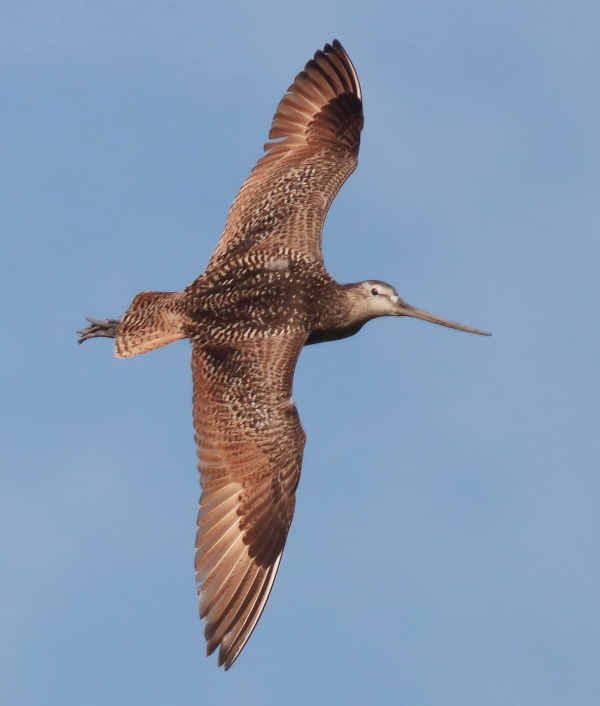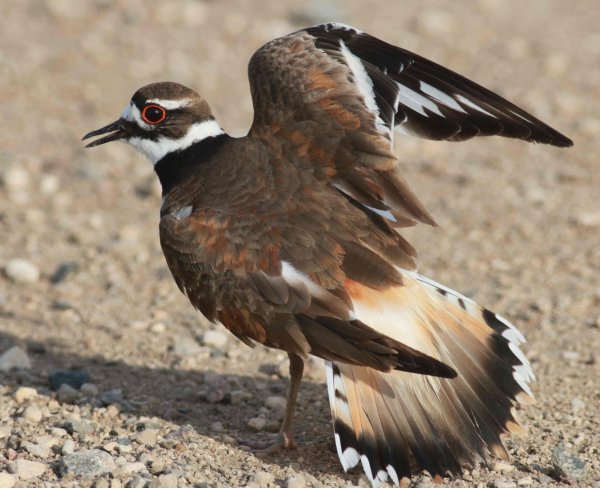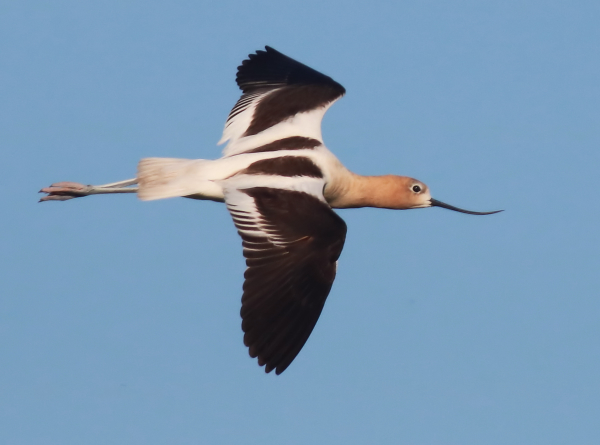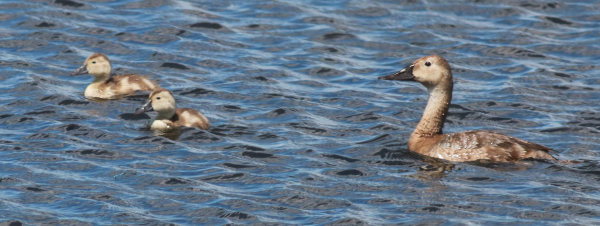
While negotiating a particularly strong wind, the action of a Marbled Godwit banking was framed at the Wet Meadows photo hotspot.
|
This is an especially busy time in the bird world, with whole communities of birds singing, establishing and protecting nesting territories, building nests, incubating eggs, searching for food, feeding and brooding nestlings, feeding and protecting hatchlings, and more – which means lots of exciting photo opportunities. The birds are present, so when the light is right, where are you planning to be?
As the season progresses, dedicated bird photographers will search out locations that provide repeated photo opportunities over a period of time. That time may las a few days, a week or two, or a season. In fact, they may renew and reappear annually during a certain time of the year. As with anything related to birds, it seems things are ever-changing, but some locations attract a variety and abundance of birds for a while, and veteran photographers take advantage of these locations as long as they last.
The attraction for birds may be a habitat or mix of habitats, or a food source, or behavioral features such as a series of elevated perches or nesting cavities. Birding vets are always on the lookout for these locations, and always checking back on past photo hotspots – go-to locations that produce photo ops with regularity. A hotspot might be a site you can visit, a trail you can hike, locations along a local drive you take regularly – there’s no set recipe, except a hotspot is a location that attracts interesting birds you can photograph time and time again. The concept of “photo hotspots” may not be obvious to some birders, so let me share a number of my birding hotspots that are go-to photo sites for me now, or during a given season.
Hotspot Examples

The dramatic behavior of a displaying Killdeer provided a few choice photographs as the bird blocked the Lost Road.
|
At this time, I have four photo hotspots that I frequent for their abundance and diversity of species – and I’m usually successful in photographing birds at each location each time I visit them – even though different species may provide the photo ops during each visit. That’s interesting in itself, but it emphasizes the element of surprise in bird photography – and all aspects of birding – that keeps us interested day after day.
Three of my go-to photo hotspots are local, but my McKenzie hotspot is two hours away. Even so, I have photographed birds at McKenzie for seven consecutive weeks – and each week different species have treated me to primo photo ops: (1) fighting pheasants, (2) displaying Western Grebes, (3) a variety of birds including pelicans, (4) White-faced Ibis, (5) Common and Black Terns, (6) an Eared Grebe, and (7) duck broods.
Local Hotspots
Day to day, I currently have three go-to hotspots that yield an abundance of photo opportunities, especially when the wind dies down. The first of these hotspots begins just a half-mile south of my office and includes three major wetlands that are bisected by the same three-mile length of road. I refer to this photo area as the Three Mile Marshes, and they attract a variety of ducks, geese, and waterbirds, with a scattering of wading birds, shorebirds, passerines, and raptors.
I’ve mentioned the Lost Road before, and that two-mile drive through a remote prairie area is an excellent photo hotspot that now features Common Nighthawks, Upland Sandpipers, Wilson’s Snipe, Bobolinks, Dickcissels, Orchard Orioles, Western Meadowlarks, Eastern and Western Kingbirds, Least Flycatchers, and native sparrows (Clay-colored, Grasshopper, Savanah, and Song Sparrows).
I call the third local photo hotspot the Wet Meadows. Recently, an area of new shallow wetlands that formed for the first time this spring when high water levels spilled over the normal shoreline of an area lake to create shallow floodwater areas that were quickly populated by ducks, shorebirds – including Marbled Godwits, Willets, American Avocets, and Wilson’s Phalaropes.
Short-term and Seasonal Hotspots

A graceful American Avocet in speeding flight above a mudflat created on the south end of the Three Mile Marshes that attracted a temporary concentration of 14 avocets.
|
Of course, birding hotspots change with time, although mostly they change when birds vacate them. For example, you may remember that I made repeated 80 mile trips to Sand Lake National Wildlife Refuge early last spring over a four-week period as spring migration began. After the huge concentrations of geese left the area, I felt I could photograph similar birds near home, so that hotspot was put on hold until late fall or early next spring.
Hotspots are often seasonally recurring, such as my spring warbler “migrant traps,” that are my go-to locations when songbird migration is in full swing. Then too, my winter raptor hotspot centered in the Pierre, South Dakota region is best from December to February when a concentration of eagles, hawks, and falcons lures me a couple hundred miles southwest for overnight photo trips periodically.
Sometimes photo hotspots are linear, that is, they include a favored area to drive a transect through. That may be an option as I drive from one location to another – such as during my weekly drives to Bismarck, Fargo, or Minneapolis. There are a number of routes I can take that pass through excellent habitats and a couple wildlife refuges. Then too, along the way I sometimes encounter a site that offers birds a seasonal habitat or food source that provides a reason to spend some extra time, and perhaps return to.
A hiking trail or walking path through a favored section of an area park or lakeshore can provide good bird photo locations along the way. Your favorite bike trail may pass through a hotspot too, or you may decide a bike is the best way to access an existing hotspot.

While trying an alternate route on the way to the McKenzie hotspot, the payoff was a surprise photo session with a Canvasback with 2 ducklings (2 of the 4 in the full brood).
Actually, I have favorite photo hotspots across the country, from San Diego to the mountains and deserts north and west of Los Angeles, to Glacier National Park, the Grand Tetons and Yellowstone; from Tucson and Phoenix to coastal Texas and southern Florida, northeast Ohio, the Minneapolis and Duluth, Minnesota areas, and beyond – each with remarkable birds at given times of the year – or daily.
As the summer progresses, appreciate and utilize photo hotspots you find; and keep an eye out for potential hotspots that may heat up during other periods of the season and the year. I’ve had great fun and considerable success photographing birds at my four hotspots during recent days and weeks, and I’m hoping for more fun and success in the coming weeks. I wish the same for you as you hone your skills and reap the rewards of bird photography.
Article and photographs by Paul Konrad
Share your bird photographs and birding experiences at editorstbw2@gmail.com